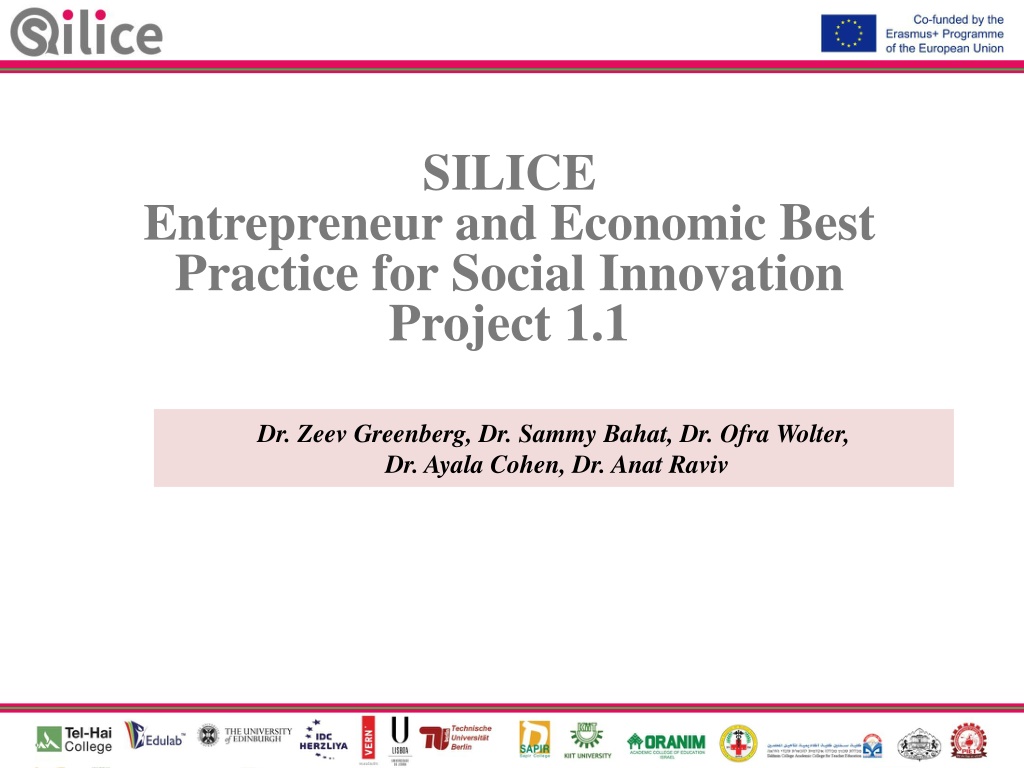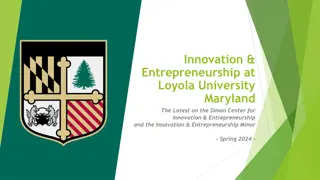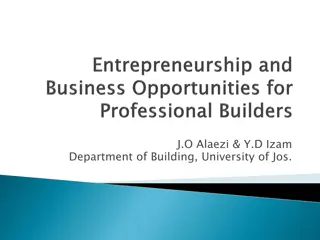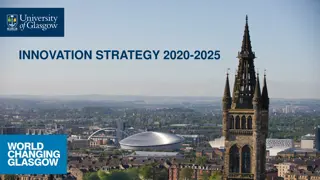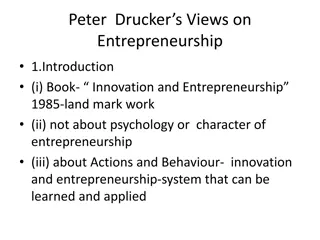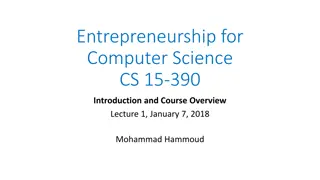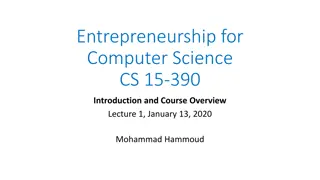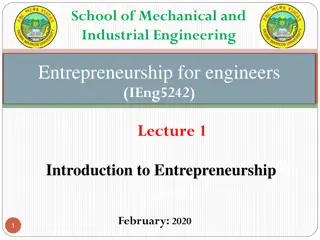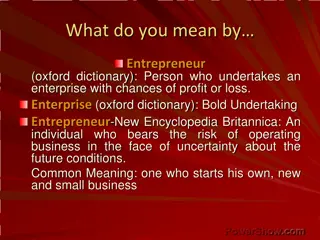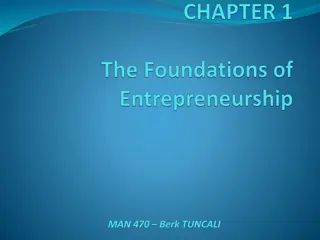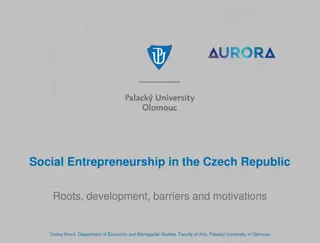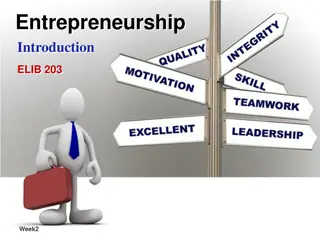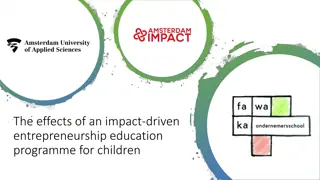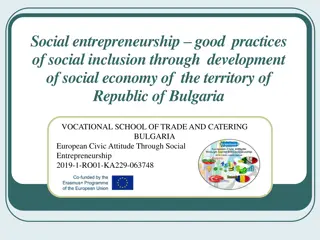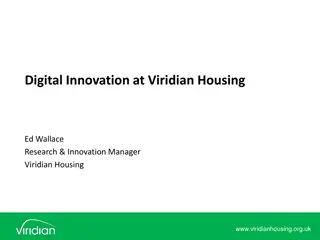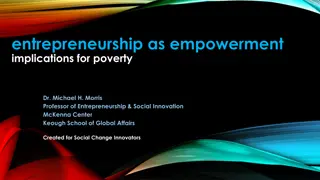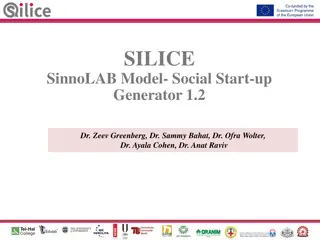Innovation and Social Entrepreneurship Initiatives in Higher Education
This project focuses on establishing a leading center for promoting innovation and social entrepreneurship within higher education institutions. It aims to encourage students and staff to develop creative solutions for community challenges, expand social involvement, and foster sustainable positive impacts. Various models such as the diamond model, classic model, incubator model, accelerator model, and hub model are explored for implementation in academic settings. The core components emphasize human and material capital as the foundation for successful entrepreneurship and social innovation endeavors.
Download Presentation

Please find below an Image/Link to download the presentation.
The content on the website is provided AS IS for your information and personal use only. It may not be sold, licensed, or shared on other websites without obtaining consent from the author. Download presentation by click this link. If you encounter any issues during the download, it is possible that the publisher has removed the file from their server.
E N D
Presentation Transcript
SILICE Entrepreneur and Economic Best Practice for Social Innovation Project 1.1 Dr. Zeev Greenberg, Dr. Sammy Bahat, Dr. Ofra Wolter, Dr. Ayala Cohen, Dr. Anat Raviv
Social Entrepreneurship Agreed Definition (Berlin, July 2017) "An activity that generates sustainable positive impact utilizing novel approaches and/or creative thinking"
A leading center in the region for promoting innovation and social entrepreneurship which operates according to principles of creativity and innovation. The center will generate social projects of high social value and establish a central platform for solving social issues, social responsibility and promoting the welfare of the individual and the community. The Center will act in the spirit of the College's vision as an institution leading excellence in research and teaching, integrated and involved in the community and promoting economic and social well-being.
The establishment and operation of the Center for the Promotion of Entrepreneurship and Social Innovation within the institutions of higher education, through which it is possible to develop, in new and creative ways, ideas of students and staff in response to social challenges in the community. Expanding students' involvement in social activity in the community.
Models of centers and incubators for business and social entrepreneurship The comprehensive model: The "diamond model" focuses on a center to develop business-technological ventures and social initiatives (a unique model for the Tel Hai team). The classic model: A model operated by the Topaz organization (similar to the operating model of the Center for Entrepreneurship MATI The incubator model for technological entrepreneurship: This model is operated by the Innovation Authority where technological ideas are developed until they reach the stage for raising venture capital. The accelerator model: A model designed to accelerate the growth of the start-up (more suitable for technological start-ups). The hub model: This is a model offering an activity space, professional support and the creation of meetings and brainstorming sessions for groups of entrepreneurs. In practice, it is possible to adapt the principles of each of the models, or a combination of models for implementation in an institution of higher learning
The components of the model and the planning assumptions Infrastructure: The operation of the SinnoLAB is based on the existence of human capital (students, academic staff) and material capital (classes, laboratories, study spaces, equipment, etc.). Organization, management and operations: Steering committee plus two or three professional committees that will deal with identifying, examining and filtering social venture ideas which have potential of social and community value. Managers: Management of the SinnoLAB on a regular basis in order to promote the social ventures in the organizational and financial aspect. Teachers: Internal consultancy of the academic staff within the framework of knowledge, counseling and promotion of the social venture. Financial sources: o Internal funds scholarships, etc. o External sources; Social investment funds, Non-profit organizations.
SinnoLAB- Organizational Structure THE ACADEMIC INSTITUTION MANAGEMENT STEERING COMMITTEE LOCATING AND CHOOSING IDEAS TEAM MANAGER EXTERNAL CONSULTING INTERNAL CONSULTING (TEACHERS) ENTERPRISES, PROJECTS
SILICE SinnoLAB Model- Social Start-up Generator Tel Hai Team: Dr. Zeev Greenberg, Dr. Sammy Bahat, Dr. Ofra Wolter, Dr. Ayala Cohen, Dr. Anat Raviv
Social Entrepreneurship Agreed Definition (Berlin, July 2017) "An activity that generates sustainable positive impact utilizing novel approaches and/or creative thinking .
A leading center in the region for promoting innovation and social entrepreneurship which operates according to principles of creativity and innovation. The center will generate social projects of high social value and establish a central platform for solving social issues, social responsibility and promoting the welfare of the individual and the community. The Center will act in the spirit of the College's vision as an institution leading excellence in research and teaching, integrated and involved in the community and promoting economic and social well-being.
The establishment and operation of the Center for the Promotion of Entrepreneurship and Social Innovation within the institutions of higher education, through which it is possible to develop, in new and creative ways, ideas of students and staff in response to social challenges in the community. Expanding students' involvement in social activity in the community.
Models of centers and incubators for business and social entrepreneurship The comprehensive model: The "diamond model" focuses on a center to develop business-technological ventures and social initiatives (a unique model for the Tel Hai team). The classic mode: A model operated by the Topaz organization (similar to the operating model of the Center for Entrepreneurship MATI The incubator model for technological entrepreneurship: This model is operated by the Innovation Authority where technological ideas are developed until they reach the stage for raising venture capital. The accelerator model: A model designed to accelerate the growth of the start-up (more suitable for technological start-ups). The hub model: This is a model offering an activity space, professional support and the creation of meetings and brainstorming sessions for groups of entrepreneurs. In practice, it is possible to adapt the principles of each of the models, or a combination of models for implementation in an institution of higher learning
The components of the model and the planning assumptions Infrastructure: The operation of the SinnoLAB is based on the existence of human capital (students, academic staff) and material capital (classes, laboratories, study spaces, equipment, etc.). Organization, management and operations: Steering committee plus two or three professional committees that will deal with identifying, examining and filtering social venture ideas which have potential of social and community value. Managers: Management of the SinnoLAB on a regular basis in order to promote the social ventures in the organizational and financial aspect. Teachers: Internal consultancy of the academic staff within the framework of knowledge, counseling and promotion of the social venture. Financial sources: o Internal funds scholarships, etc. o External sources; Social investment funds, Non-profit organizations.
